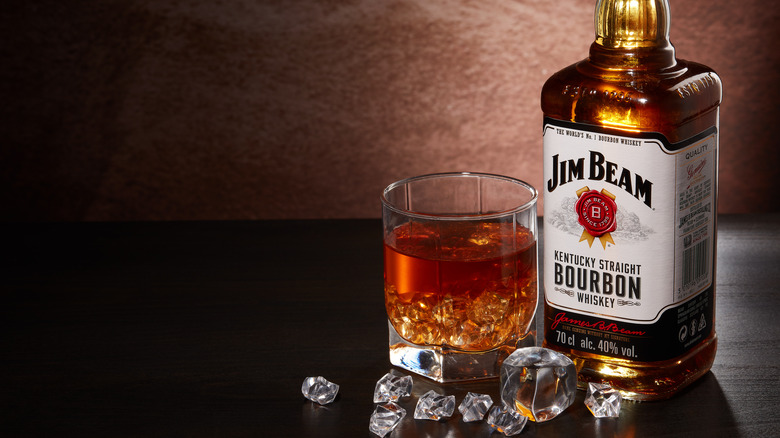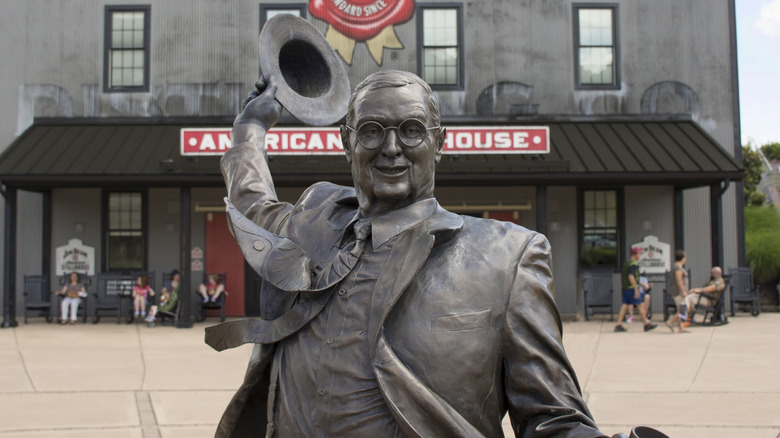The History Of Jim Beam Bourbon Began With A Corn Farm
Walk into any liquor store, and you'll be confronted with rows of bottles and spirits emblazoned with the names of the men before us: Captain Morgan, Jack Daniels, Johnnie Walker, Jose Cuervo, and of course, a classic American whiskey: Jim Beam. Alcohol connoisseurs will know that not all whiskeys are created equal, and there are eleven types of whiskey out there, each with their variances, nuances, subtleties, and different tasting notes.
Jim Beam declares on its bottle label that it is a Kentucky Straight bourbon whiskey, making it one of the sweeter types of the spirit. There is even a well-known proverb that dictates that "while all bourbons are whiskeys, not all whiskeys are bourbons." Bourbon is distinguished from other whiskeys because it must be distilled from one certain ingredient: corn. So it makes sense that a corn farm also happens to be where the popular Jim Beam bourbon has its roots.
The Boehm family's American dream
Like so many other American foods, Jim Beam whiskey is a product of immigration, hard work, and a determination to make old traditions in a new land. According to the Jim Beam website, Jacob Beam — formerly Boehm, which became Americanized to Beam — was a farmer of German descent whose family migrated from Deutschland to colonial western Pennsylvania. Once settled in the so-called new world, the Beam family began making rye whiskey with their imported recipes.
However, the Beam family then ended up in Kentucky by a combination of luck and law.
In the late 1700s, the United States government incentivized families to migrate Westwards to grow corn. Corn farmers, of course, have an excess of their product, so the entrepreneurial Jacob Beam used the ears of corn to distill into a sweeter type of whiskey. Beam sold his first barrel in 1795 and cemented himself into whiskey history for the next couple of hundred years and counting.

